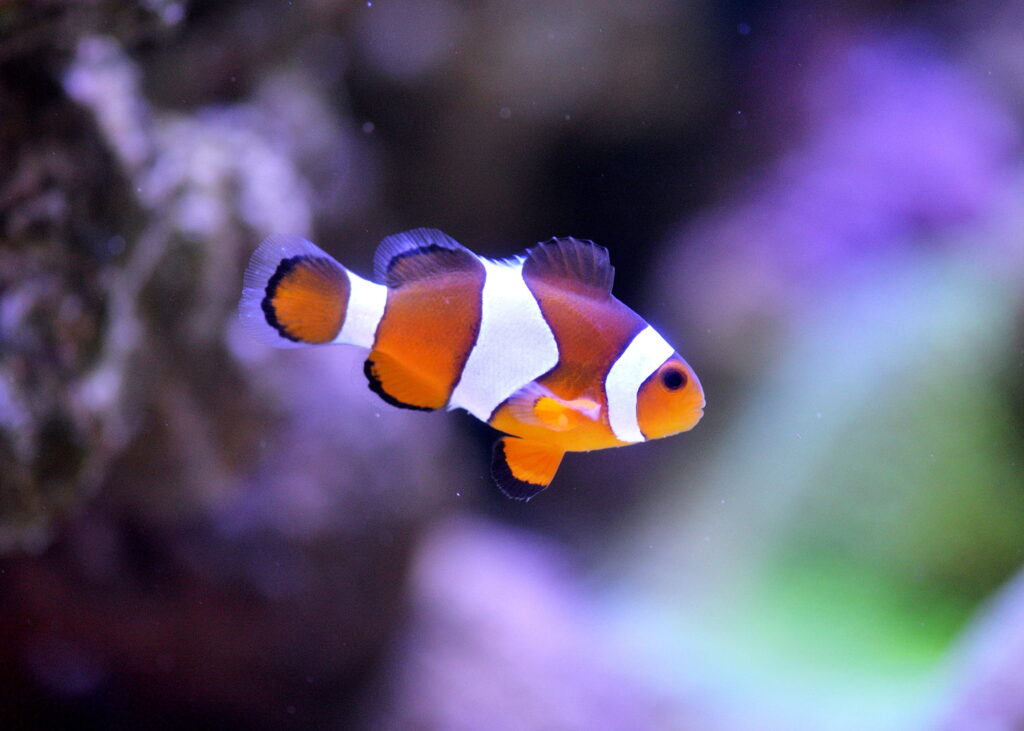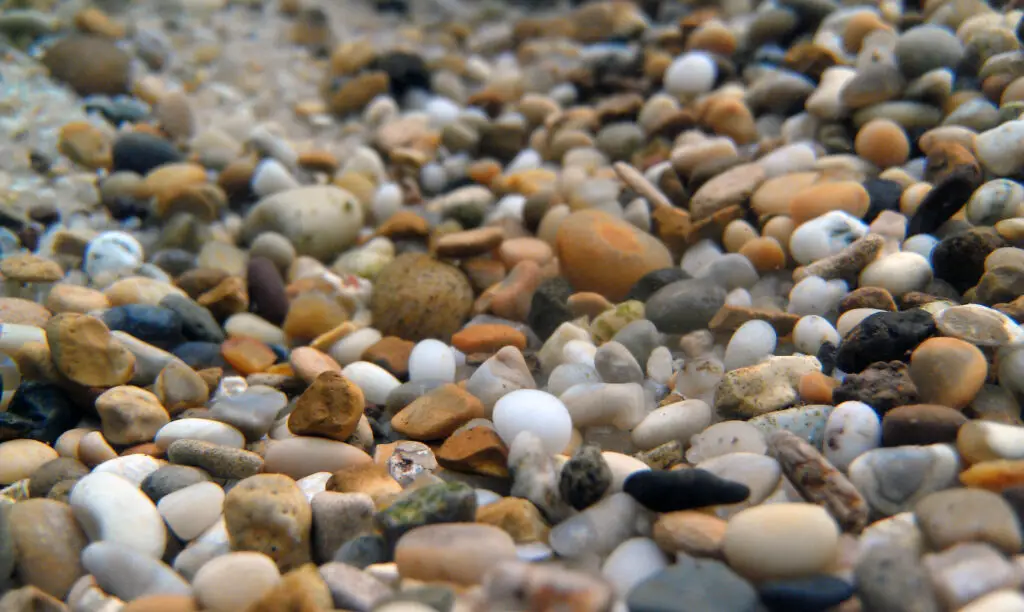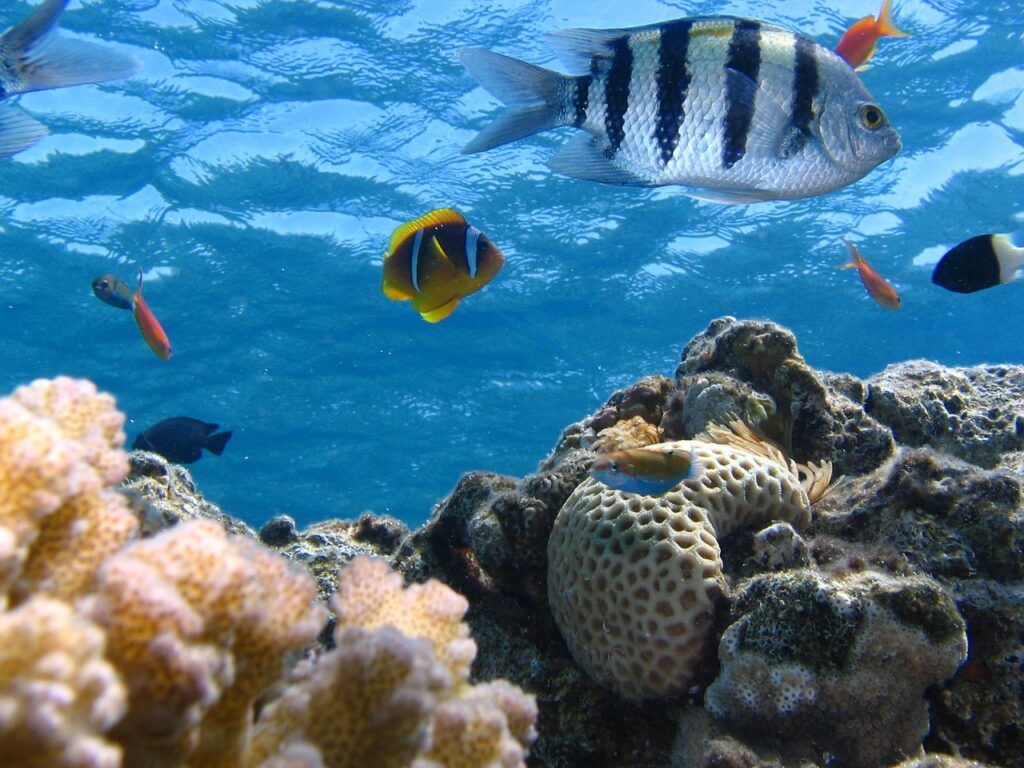Ich, short for Ichthyophthirius Multifiliis and also known as White Spot, is a common parasitic infection in many species of aquarium fish, including clownfish, that will eventually kill your fish if not treated. The white spots are each about the size of a grain of salt and cover the fish’s scales and gills.
The rest of this article tells you all you need to know about Ich, how it affects your clownfish, and what to do in the event of an infestation.
What Is Clownfish Ich?
Ichthyophthirius Multifiliis means “Fish louse with many children” in Latin, which highlights the proliferating nature of the disease. Ich isn’t exclusive to clownfish, and can affect most species of aquarium fish.
While the parasite in freshwater aquariums is called Ichthyophthirius Multifiliis, the parasite in saltwater aquariums is Cryptocaryon irritans. There are four stages to its life cycle, during which the parasite takes on five distinct forms:
- Infection Stage – the stage where the Theronts float freely through the water in search of a host. If the theronts don’t find a host within 48 hours, they will die out.
- Important note: this is the only stage where the parasite is vulnerable to Ich medication
- Feeding Stage – after finding a host and latching on, the theronts become Trophonts, which burrow into the skin of the fish host and start feeding on the fish’s flesh. This is the stage that the parasite becomes visible in the form of tiny white spots.
- Drop-Off Stage – the trophont releases itself from the body of its host after 3 – 9 days of feeding, the Protomont now searching for a hard surface (such as coral, rocks, or glass) upon which to reproduce.
- Reproduction Stage – after the protomont finds a hard surface upon which to anchor itself, it becomes a Tomont, forming more than 200 offspring cells called Tromites. Incubation time ranges widely, taking between 3 – 72 days for the Tromites to hatch and be released into the water, after which they become Theronts and repeat the cycle. It is virtually impossible to see the parasite during the incubation period, and you may mistakenly believe the parasite gone.
Ich reproduce more rapidly in warmer water, and depending upon the temperature of the water in your aquarium, it may take a few days to a few weeks to develop a full-blown infestation.
What Causes Ich?
Ich is almost exclusively found in aquarium fish, as fish in the wild don’t encounter the parasite in large enough quantities to become infected.
Contrary to popular belief, Ich isn’t contagious, as only fish with weakened immune systems are susceptible to the parasite. As long as your fish are healthy and happy, an Ich infestation is unlikely.
How Do I Know if My Clownfish Has Ich?
Ich is most commonly identified by the small white spots marking your clownfish’s gills and scales. Other symptoms include:
- Fish rubbing itself against coral or rocks (to alleviate the itch)
- Bruising or missing scales (a result of vigorous rubbing)
- Lethargy (sluggishness, decreased activity)
- Poor appetite
- Rapid breathing
- Death (caused by the grain-sized trophonts blocking fish’s gills)
How Do I Treat Ich?
Ich is easy to treat but can become fatal for your fish if left untreated. The three most common and effective methods for treating an Ich infestation are as follows:
- Isolation Method – take your clownfish out of the main tank and into a quarantine tank. As the Ich proceeds with its life cycle, it will die without a host, so if you keep the tank empty for about a week, the parasite will die out.
- Salt and Heat Treatment
- With your clownfish safely in a quarantine tank, raise the temperature in the fish-free main tank by 1 or 2 degrees Fahrenheit every day, until it reaches 86 degrees F. This will speed up the Ich life cycle.
- Add aquarium salt to the water – follow the instructions on the label
- Every 2 – 3 days, change out 25% of the water and replace any salt that is lost
- Stop adding salt after 10 days, but continue 25% water changes. Do this until there is no more salt in your tank.
- Medication
- There are many over-the-counter medicines for treating Ich. If your clownfish has Ich, add the medicine to the quarantine tank instead of the main tank.
How Do I Prevent Ich in my Clownfish?
The best way to prevent an Ich infestation is to adequately quarantine a new fish before bringing it into the aquarium with your other fish. Quarantine should occur in a separate tank with separate equipment.
Below are the recommended quarantine times:
- New fish: 4 – 6 weeks
- New invertebrates (shrimp, snails, etc.): 2 – 4 weeks
- New plants: 2 weeks
The following are other ways you can keep Ich from contaminating your aquarium.
- When buying new fish, never buy a fish from the same tank as a sick or deceased fish. This is a clear indicator that there is something wrong with the fish or the water.
- Make sure you have good water quality with your betta so you don’t risk weakening their immune system.
- Make sure not to overcrowd your tank. It’s recommended to have one fish per one gallon of water. This ensures that your tank isn’t overcrowded and that each fish has enough room for healthy activity.
- Feed your clownfish a varied diet
- Avoid ordering fish online, since fish don’t travel well and often become sick and weakened from long distances. Buy your fish from a local pet store instead.
Can Marine Fish Survive Ich?
Ich effects both freshwater and saltwater aquarium fish.
With sufficient treatment, your aquarium fish can survive an Ich infection without any long-term health effects.
Can you Prevent Lymphocystis Disease in Fish?
Lymphocystis is a common disease in aquarium fish that has symptoms similar to Ich and is highly contagious.
Clownfish are one of the species most susceptible to lymphocystis. Other species most susceptible include:
- Cichlids
- Gouramies
- Gobies
- Butterflyfish
- Clownfish
Preventing lymphocystis in your aquarium fish requires the same steps as preventing Ich:
- Feed your fish a healthy, varied diet
- Maintain optimal water quality
- Avoid stressing your fish with overcrowding, lack of shelter, etc.
- Quarantine any new fish you are bringing into your aquarium



